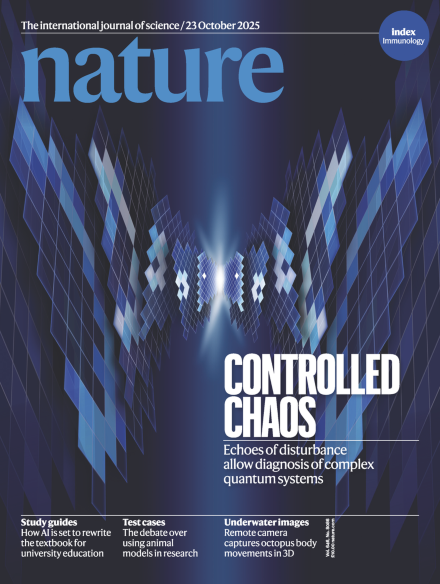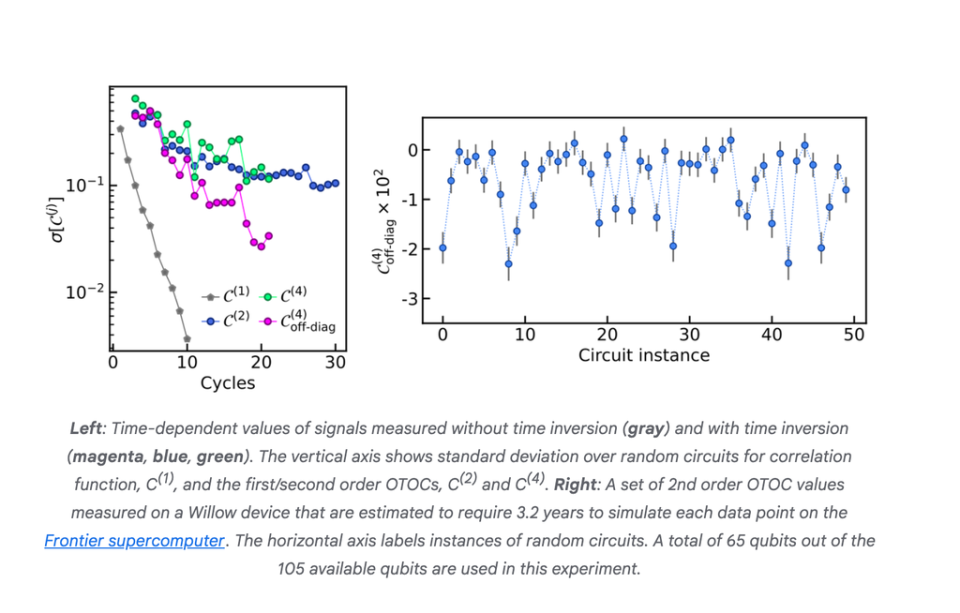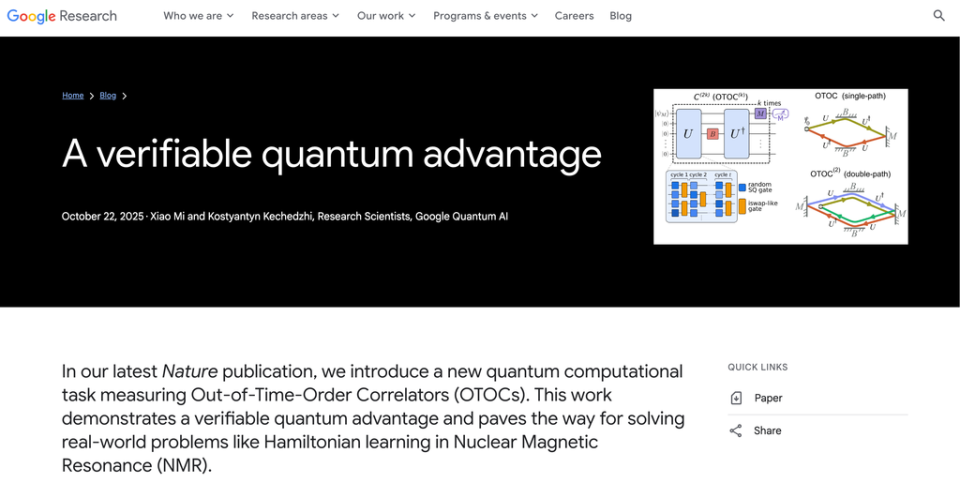Google’s New Quantum Computing Research Graces Nature’s Cover! Nobel Laureate Backs Breakthrough 13,000 Times Faster Than Supercomputers
default / 2021-11-15
Today, Google announced a major algorithmic breakthrough: its research team, leveraging the latest-generation Willow quantum chip, has successfully run a verifiable algorithm on quantum computer hardware for the first time. Compared to supercomputers, the quantum computer’s speed has increased by approximately 13,000 times. The relevant research has been featured on the cover of the top academic journal Nature.

In December last year, Google announced the launch of the Willow quantum chip, built with superconducting quantum circuits. Superconducting quantum circuits originated from the groundbreaking discovery of macroscopic quantum effects in 1985. John Clarke, Michel H. Devoret, and John M. Martinis were awarded the 2025 Nobel Prize in Physics for their contributions to this field.
The name of Michel H. Devoret—newly minted Nobel laureate and Chief Scientist of Google’s Quantum AI division—appears in the author list of this paper by Google’s Quantum AI team.

This paper demonstrates the novel "Quantum Echoes" algorithm, whose core is to measure the expected value of a quantum observable known as OTOC (Out-of-Time-Ordered Correlator).
This observable can not only be verified by another quantum computer or a natural quantum system but also exceeds the simulation capabilities of known classical algorithms.
Google’s Quantum AI team conducted the "Quantum Echoes" experiment on the Willow quantum chip, measuring the fluctuations of different observables across circuit instances. The researchers found that higher-order OTOCs can remain sensitive to the microscopic details of quantum dynamics over an extended period.

The research team also found that higher-order OTOCs can capture quantum interference effects, and in comparison with classical algorithms, the quantum processor demonstrates a distinct advantage in signal-to-noise ratio (SNR). Their experiment on Willow took approximately 2 hours, while the same experiment on a traditional supercomputer is expected to take 13,000 times longer.

Sundar Pichai, CEO of Google and its parent company Alphabet, stated: "This new algorithm can use nuclear magnetic resonance to explain the interactions between atoms in molecules, paving the way for potential applications in drug development and materials science in the future."
Over the past four decades, driven by mature integrated circuit manufacturing technology and active research in both academic and industrial sectors, superconducting qubits have demonstrated an exceptional balance in performance and scalability—making superconducting quantum circuits the preferred platform for building fault-tolerant quantum computers.
Building on this foundation, Google aims to create practical value for quantum computing through a complex application.
The "Quantum Echoes" algorithm relies on reversing the flow direction of quantum data in a quantum computer, which in turn imposes strict requirements on the system-level performance of the Willow chip: executing a large number of quantum gates and conducting a large number of quantum measurements—two key elements for extracting useful signals from background noise.
After continuous optimization, the current-generation Willow chip has achieved industry-leading large-scale computing performance.
Within its 105-qubit array, the single-qubit gate fidelity reaches 99.97%, the entanglement gate fidelity 99.88%, and the readout fidelity 99.5%—all operations are performed at a breakthrough speed of tens to hundreds of nanoseconds.
These high-precision quantum gates enable Google to execute the highly complex Quantum Echoes algorithm, which involves large-scale quantum interference and entanglement. This has pushed the research results to a level beyond the computing power of traditional computers.
Furthermore, in addition to its precision advantages, the Willow chip can also complete millions of quantum echo measurements in just tens of seconds. This speed allowed the project to conduct one trillion measurements—accounting for a significant portion of the total measurements performed on all quantum computers to date—and making it one of the most complex experiments in the history of quantum computing.

Since the establishment of Google’s Quantum AI team, the team has consistently followed a strategic roadmap with the long-term vision of building a large-scale fault-tolerant quantum computer.
To date, Google has achieved two milestone advancements: completing "beyond-classical quantum computing" in 2019 and realizing a "quantum error correction prototype" in 2023.
With the launch of the Willow quantum chip in 2024, Google’s strategic roadmap has taken a further step: successfully demonstrating quantum error correction below the threshold, moving toward the third milestone.
This verifiable demonstration of quantum advantage marks another key progress for Google’s Quantum AI team.

Google’s next milestone goal is: long-lived logical qubits. To achieve this goal, the system’s performance and scale will need to be improved by orders of magnitude, and millions of key components will also need to be developed and refined.
Conclusion: Quantum Computing Is Moving Toward Practical Applications
The successful completion of the "Quantum Echoes" quantum computing experiment benefits from Google’s hardware advancement—the breakthrough of the Willow quantum chip. Currently, Google’s Quantum AI team is moving toward realizing large-scale complex quantum computing using superconducting qubits.
Google’s Quantum AI team stated: "This path will lead to some of the first practical applications of quantum computing."





